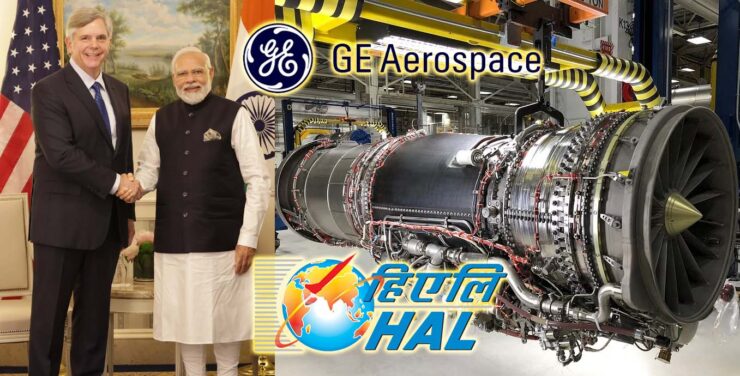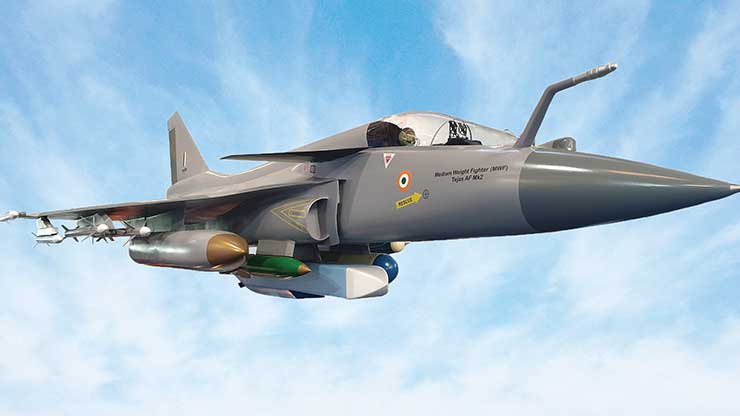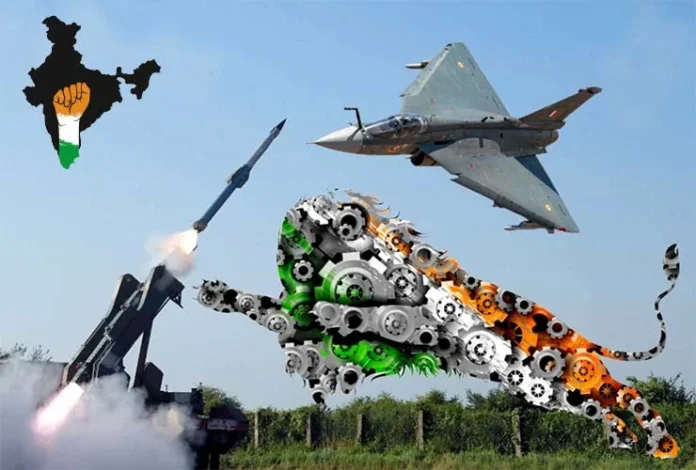Prime Minister Narendra Modi’s recent state visits to the United States and France have garnered significant attention due to their symbolic value and strategic implications. The June visit to the US, marked by an elaborate state welcome, underscored the deepening strategic alignment between the two nations. With bilateral trade reaching USD 132 billion in 2022, the US stands as India’s largest trading partner. Additionally, it has emerged as a key defence trade collaborator, with contracts worth USD 22 billion inked over the past 15 years.
In parallel, the prime minister’s July visit to France was equally momentous. PM Modi was honoured as the Guest of Honour during France’s Bastille Day celebrations. A striking display unfolded as an Indian military contingent participated in the ceremonial parade, featuring a captivating flypast including three IAF Rafale aircraft.
However, beyond the visual spectacle, the true significance lies in the realm of arms and technology accords inked during these visits. These agreements encompass substantial manufacturing commitments and hold particular importance within the context of ‘Make in India’ initiative. After the visits, the onus now shifts to decision-makers to scrutinise each agreement meticulously, evaluating how these accords can be harnessed to bolster India’s defence manufacturing sector. This moment beckons a critical review of policies and strategies to assess their tangible outcomes.
Reassessing the ‘Make in India’ Approach
The first half of the 20th century bore witness to seismic technological strides in the wake of the two World Wars. These conflicts propelled the growth and dominance of military technology research and its associated industries. In the post-1945 landscape, Western nations commanded the reins of technology, primarily within the defence sector. While nations recognised the indispensable role of industrialisation and manufacturing in driving economic growth, job creation, and overall national development, non-Western countries found it progressively arduous to attain technological autonomy. This predicament assumes particular gravity within the defence technology domain.
Countries boasting substantial populations like India and China place manufacturing at the heart of their agendas. China adeptly harnessed this thrust to secure its position as a premier global manufacturer and exporter. However, India’s focus on the service sector’s accomplishments led to a costly neglect of manufacturing capabilities. Consequently, import dependence became pervasive across industries, particularly in critical domains like capital goods and machinery. This reality is mirrored in escalating royalty payments and licence fees rendered to foreign corporations for industrial technologies.
The Union Government recognised this conundrum as early as 2011, initiating a National Manufacturing Policy to elevate the manufacturing sector’s contribution to GDP from a modest 14%. This strategic move aligned with India’s status as the world’s most populous nation till 2050, underscoring the imperative of a manufacturing sector exceeding 25% of GDP to accommodate the vast youth population and avert squandering the demographic dividend. In 2014, Prime Minister Modi launched the ‘Make in India’ campaign, aimed at achieving ambitious targets including:
- Sustaining a 12-14% annual growth rate in the manufacturing sector.
- Raising the manufacturing sector’s GDP share from 15% (2014) to 25% by 2022.
- Generating 100 million jobs by 2022.
Regrettably, none of these objectives have come to fruition. The manufacturing sector’s contribution to GDP languished at 13.32% in 2022, down from the 2021 mark of 14.47%. Similarly, job creation flagged, evidenced by a considerable 7.45% unemployment rate in 2022. While the ‘Make in India’ blueprint addressed foundational policy aspects, exemplified by India’s climb from 142nd to 77th in the UN’s ease of doing business ranking, the yawning gap between policy intent and tangible outcomes underscores the absence of a robust implementation strategy. Failures to grapple with enduring challenges spanning structural issues, financial constraints, and cultural barriers, including quality standards, work ethic, production efficiency, and skill deficiencies, have collectively contributed to the ‘Make in India’s suboptimal achievements.
Strengthening India’s Technological Backbone
Defence and aerospace industries function at the top level of the technology pyramid. A robust defence industry ecosystem not only fortifies a nation’s industrial base but also bolsters its technological standing. India has been importing major defence equipment since independence and continues to be one of the largest importers in the world. However, the ability to independently design, develop, and manufacture major weapon systems, along with critical components and aggregates, hinges on the mastery of essential technologies encompassing material sciences and design tools.
For countries entering this field belatedly, like India, the path towards self-sufficiency necessitates a blend of collaboration, joint ventures, technology diffusion and absorption, reverse engineering, substitution engineering, and integration into the global supply chain. While India has established a substantial military-industrial complex, largely public-sector-driven, the ecosystem remains underdeveloped due to barriers impeding private sector participation and inadequate support for innovation.
Recognising these shortcomings, the ‘Make in India’ and ‘Aatmanirbhar Bharat’ strategies emerged to cultivate India’s defence ecosystem, fostering private sector involvement and international cooperation. However, the success of these initiatives requires a comprehensive, long-term strategy that capitalises on significant defence manufacturing agreements, as demonstrated by the recent deals with the US and France.

Catalysing ‘Make in India’ Revamp
Arguably, the most consequential outcome of Prime Minister Modi’s US visit is the HAL-GE 414 aero engine agreement. This milestone paves the way for a joint venture (JV) between Hindustan Aeronautics Limited (HAL) and General Electric (GE) to produce 99 GE 414-version I-6 engines in India. Although HAL has manufactured around 4000 aero engines (both Western and Soviet) under licence for over five decades, India’s quest for an indigenous aero engine remains unrealised. The Kaveri engine project that sought to power the indigenous fighter had to be shelved after three decades of effort. The primary cause for the failure of the project was the lack of a coherent strategy and funding to develop a larger aerospace ecosystem of SMEs that could take on various challenges.
The GE-HAL agreement should be analysed carefully to leverage its potential and opportunities. There was considerable misplaced euphoria about Technology Transfer when the deal was announced. To put it in the correct perspective, the HAL-GE deal is a production contract for manufacturing 99 engines. There is no transfer of technology involved in terms of design knowledge. However, any such manufacturing contract will necessitate the transfer of advanced production technology. This by itself is significantly beneficial.
Developing a coherent strategy: To develop a good strategy, a few questions must be answered. The first is whether this contract will end once 99 engines are manufactured. And the second question should relate to the investments required to establish the manufacturing infrastructure and the timeframe for the production run and if this would be economically viable. The requirement of GE 414 for the LCA (Tejas) aircraft came up because of an IAF study on the performance of the LCA. This study (done by the committee headed by the author) indicated that as the LCA was overweight (normal for any initial design aircraft), the current engine GE 404 made the Tejas underpowered. The committee recommended an engine of not less than 90 Kn thrust to meet most of the performance requirements. This gave rise to the concept of Tejas Mk2 and the GE 414 was shortlisted as the engine in 2011 and a requirement of 99 engines was frozen.

There have been more changes since then, and the new Tejas Mk2 will be a 23-tonne aircraft in the Rafale category with a highly refined airframe design inclusive of canards for performance optimisation. The Indian Navy, meanwhile, has opted for a twin-engine version of the Tejas Mk2, calling it Twin-Engine Deck Based Fighter (TEDBF).
Anticipating a production run of 99 engines in just eight years might not justify substantial investments. Considering India’s evolving air force and naval requirements, it becomes evident that both Tejas Mk2 and TEDBF will assume pivotal roles. The IAF’s quest to bolster its squadrons from 30 to 42 underscores the necessity of Tejas Mk2, with projections of procuring 200-300 such aircraft. The Indian Navy, envisaging 60 TEDBF aircraft with 120 GE 414 engines, translates into a sizeable production run spanning 20-25 years. This panorama offers an unprecedented opportunity to cultivate an ecosystem of tier 1, 2, and 3 manufacturers.
The prolonged production run demands establishment of advanced technologies in India, transcending specialised coating methods, advanced manufacturing techniques, laser drilling, blisk manufacturing, single crystal blade technology, and more. HAL’s role as a system integrator is pivotal, channelling 80% of manufacturing to SMEs. Here, a meticulously crafted strategy, underpinned by governmental commitment, is essential.
The Road Ahead
Integral to a national strategy, technology absorption and diffusion bear profound significance. India’s past negligence of these facets has exacted a toll on its technology sovereignty. Acknowledging the irrefutable need for sustained production, India must steer a strategy centred on technology absorption, import substitution, value addition, and export orientation. The GE 414 contract, if navigated judiciously, could fill critical gaps in India’s aero engine aspirations.
Prospects of GE participating in risk-sharing for the Advanced Medium Combat Aircraft (AMCA) project hold potential, contingent on India capitalising on the GE 414 agreement to its advantage. Only then can we avoid inadvertently benefiting the American military-industrial complex.
Similar analyses and strategies must shape the India-France submarine construction and aero-engine deals. The crux lies in sustained, coherent strategies with a panoramic outlook.
-The writer is a former Deputy Chief of Integrated Defence Staff. Recipient of AVSM VM & PhD, he is currently the President of the Peninsula Foundation. The views expressed are personal and do not necessarily reflect the views of Raksha Anirveda
–The writer, a AVSM VM PhD (V) is a former Deputy Chief of Integrated Defence Staff for Policy, Plans, & Force Development (DCIDS – PP & FD). He is currently the President of The Peninsula Foundation, a Chennai-based public policy research think tank. The views expressed are of the writer and do not necessarily reflect the views of Raksha Anirveda






